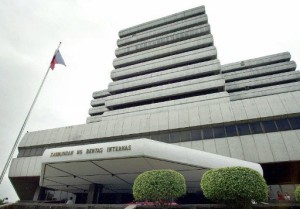The ongoing eruption of Taal Volcano served as a reminder of how vulnerable the Philippines is to natural calamities and the importance of the government’s effort to insure and protect public assets in disaster-prone areas.
The government is planning to rebid a one-year program to insure these assets.
National Treasurer Rosalia V. de Leon told the Inquirer on Monday (Jan. 13) that there will be a rebidding among interested reinsurers for the P2-billion national indemnity insurance program of the state-run pension fund Government Service Insurance System (GSIS).
De Leon said officials were “still discussing” the timetable for the rebidding.
In December, De Leon told the Inquirer that there was “failed bidding” for the program, even as the GSIS had allowed reinsurers to submit bids until Dec. 11, a one-week extension from the initial Dec. 4 deadline.
The contract would have had covered the period Dec. 19 last year until Dec. 19 this year.
In a separate message, Finance Secretary Carlos G. Dominguez III said the government was “working on a natural catastrophe cover for our strategically important assets” like schools, roads and bridges.
Dominguez said insuring these “would protect against natural castastrophes such as tsunamis, volcanic eruptions, typhoons, earthquakes and storm surges.”
The reinsurance contract would cover damage or ruin because of fire, lightning, quakes, floods, storm surge, typhoons and volcanic eruptions.
To be insured included bridges and roads in 25 provinces and schools in 32 provinces and National Capital Region.
Last year, the GSIS and the Bureau of the Treasury signed a memorandum of understanding (MOU) for the indemnity insurance program, which will insure government assets in 25 provinces in the eastern seaboard for P1 trillion—the total insurance covering strategically important assets in coastal areas facing the Pacific Ocean.
According to De Leon, the Treasury had a P2-billion allocation for indemnity insurance premium, which nonetheless takes some more time to tap unlike quick-disbursing parametric coverage wherein payouts are immediately released after hitting loss triggers.
Indemnity insurance entailed adjustments based on losses and transferring them to reinsurers, De Leon had explained.


